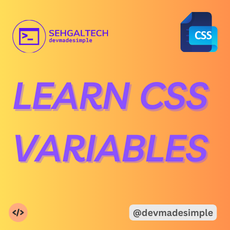React hooks have revolutionized the way we manage state and side effects in our components. But when it comes to side effects, two power players emerge: useEffect and useLayoutEffect. While they seem similar at first glance, understanding their subtle differences is crucial for writing efficient and performant React applications.
The Side Effect Showdown:
Both hooks allow us to execute code after a component renders. However, their timing and execution context differ significantly:
- useEffect: Runs asynchronously after the browser paints the screen. This means it doesn’t block the rendering process, ensuring smooth performance.
- useLayoutEffect: Runs synchronously before the browser paints the screen. This guarantees that any DOM manipulations happen before the user sees the update.
Choosing Your Champion:
So, which hook should you choose? Here’s a breakdown of their ideal use cases:
useEffect:
- Fetching data from APIs
- Setting up subscriptions and event listeners
- Updating state based on props or other values
- Generally, any side effect that doesn’t require immediate DOM manipulation
useLayoutEffect:
- Measuring DOM elements (e.g., getting scroll position)
- Animating or transitioning elements
- Manipulating the DOM directly (use with caution!)
- Situations where synchronous behavior is critical
The Battle Scars (and How to Avoid Them):
While useLayoutEffect offers synchronous execution, it comes with potential drawbacks:
- Performance impact: Blocking the rendering process can lead to slower updates.
- Visual glitches: If
useLayoutEffectmodifies the DOM based on previous state, it can cause visual inconsistencies. - Potential bugs: Overusing
useLayoutEffectcan make your code harder to reason about and debug.
Remember: Reach for useLayoutEffect with caution and only when useEffect falls short.
Bonus Round: useEffect with Dependencies:
Remember the dependency array in useEffect? It allows us to control when the effect re-runs. This is crucial for optimizing performance and avoiding unnecessary re-renders.
Pro Tip: Use the smallest possible dependency array to ensure your effect runs only when necessary.
In Conclusion:
Understanding useEffect and useLayoutEffect empowers you to manage side effects effectively in your React applications. By choosing the right hook for the job, you can write performant, efficient, and visually appealing code. So, go forth and conquer those side effects like a React pro!
Additional Resources:
- React documentation on
useEffect: https://legacy.reactjs.org/docs/hooks-effect.html - React documentation on
useLayoutEffect: https://react.dev/reference/react/useLayoutEffect - A detailed comparison of
useEffectanduseLayoutEffect: https://kentcdodds.com/blog/useeffect-vs-uselayouteffect
I hope this blog post helps you navigate the world of useEffect and useLayoutEffect like a champion!





